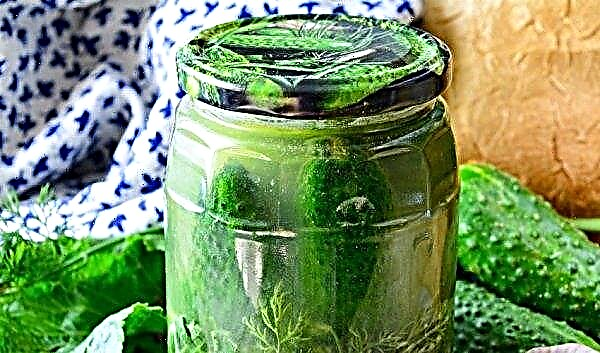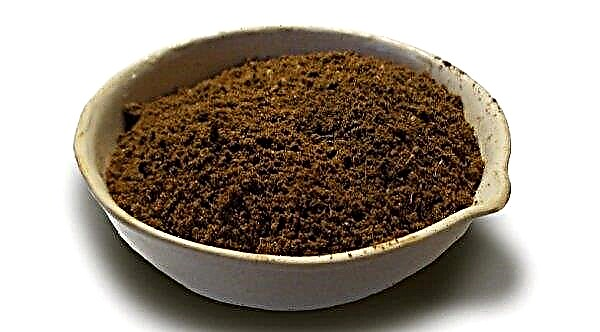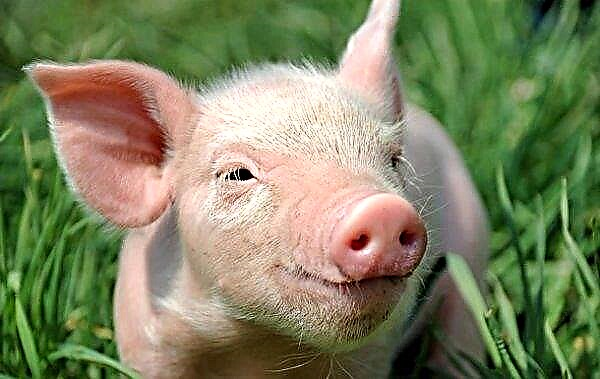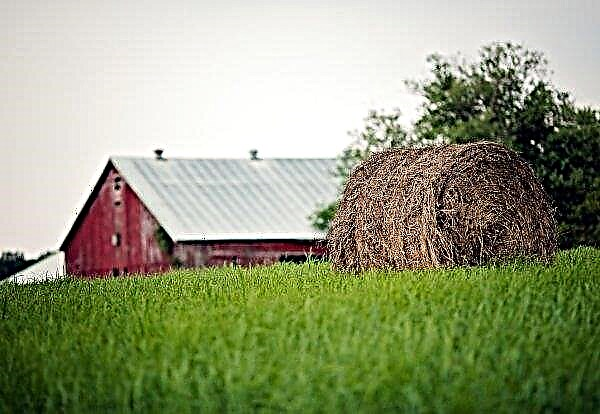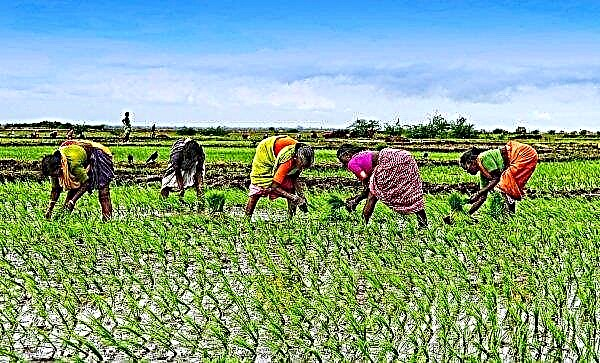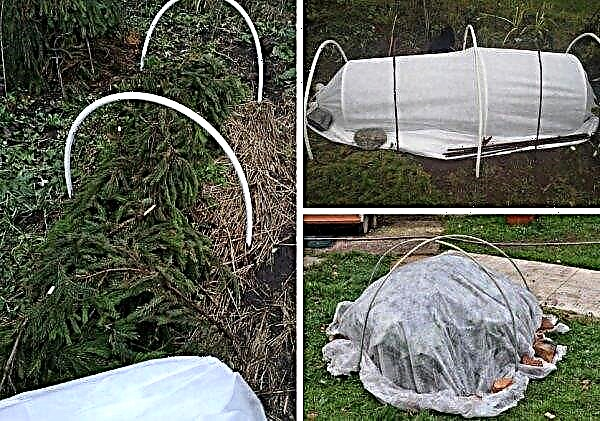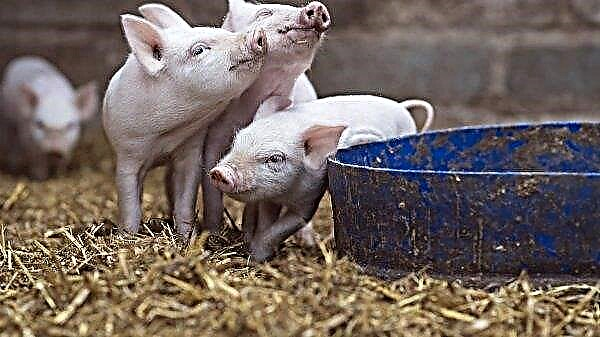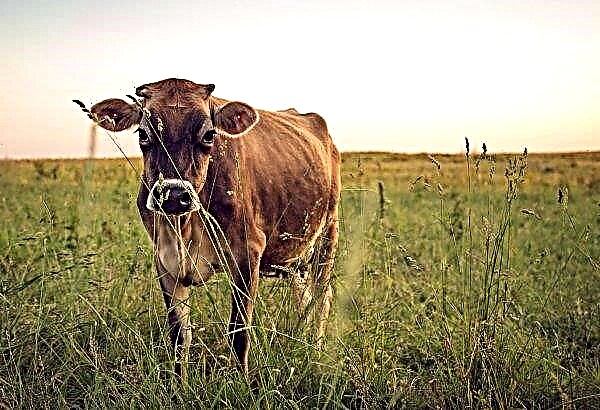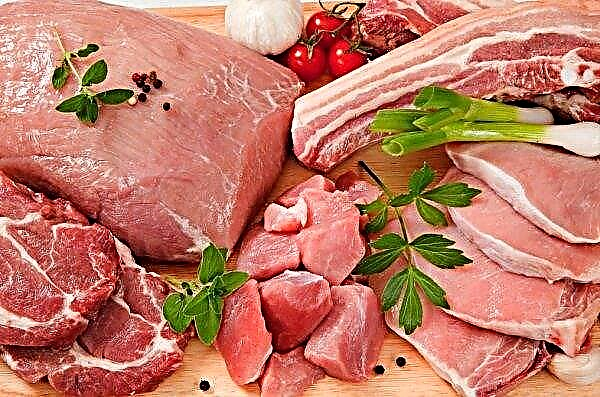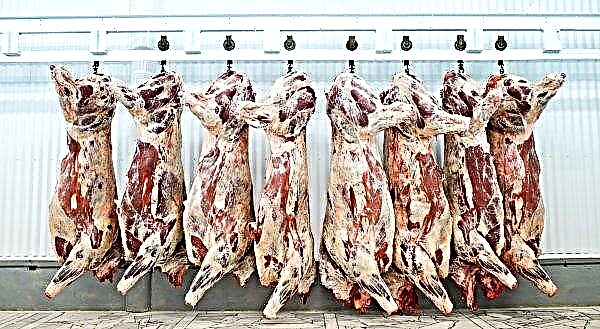Sea buckthorn of the Chuiskaya variety, despite its impressive age of 41 years, is able to compete even with the varieties recently bred. What are the features and advantages of this plant, as well as a detailed description of agricultural technology of culture - further in the article.
Selection history
This cultivar was obtained at the Federal Altai Scientific Center for Agrobiotechnology (Barnaul) through free pollination of wild sea buckthorn growing in the valley of the river. Chuya (a tributary of the Katun River) - hence the name of the variety. Breeders spent almost 20 years on breeding, but already in 1978 they presented sea buckthorn for state variety testing. The scientific center pursued a number of goals - reducing the number of spikes on the shoots, maximizing yield and improving fruit qualities.
Did you know? In ancient Greece, horses were treated by giving them buckthorn leaves. — such a “medicine” performed a healing function, and, moreover, contributed to the beautiful appearance of the animal.
1979 was a memorable year due to the fact that the variety was included in the State Register of selection achievements of the Russian Federation in a number of regions:
- Middle Volga;
- Northwestern;
- Far Eastern;
- Ural and others
Botanical grade description
The height of the plant can reach 3 m, the red-brown bark of which is covered with white pile. Quite often used by gardeners to obtain valuable berries. In more detail, the variety and its distinctive characteristics will be discussed later.
Bushes and leaves
Sea-buckthorn Chuiskaya - a small multi-stemmed bush, crown - a rare, rounded shape, not prone to thicken. The branches forming the "skeleton" are visually distinguished by their total mass of shoots. The leaves are narrow, alternate and have a spiky shape, resemble lancets. On the branches of this year, the color of the foliage is quite dark, and on last year's, it is pale green, in both cases there is a silver tint. There are very few thorns and they are weakly expressed.
Flowers and perianth
Sea buckthorn flowers are small, with yellow-green petals. The female specimen of the tree has a lot of them, they can hide even in the axils of the thorns, but the male specimen they are collected in small inflorescences. Flowering time falls at the end of April - beginning of May. Perianth is simple, with one pestle and four stamens. In male species, the receptacle is flat, and in female, tubular.
Video: sea buckthorn Chui
Fruit
The size and quality of berries are directly affected by the region where they are grown, as well as the conditions of care. Often the color is saturated orange, and the fruits themselves are elongated, round-cylindrical in shape resemble eggs. The smell is quite pronounced, pleasant, and the taste is characterized by acid and sweetness at the same time.
Important! Berry quality and yield are directly dependent on watering. With a lack of moisture, the berries are smaller, and the plant bears fruit about 2 times less.
Variety Characteristics
The main varietal characteristics include:
- early maturity - the first time the tree gives fruit in the third year after planting;
- maturation - late summer (removal of berries is carried out in the second decade of August);
- productivity - high, 8–13 kg from one specimen (using the agricultural technology described below, it will be possible to increase the yield to 22 kg);
- winter hardiness - high, up to -45 ° С.
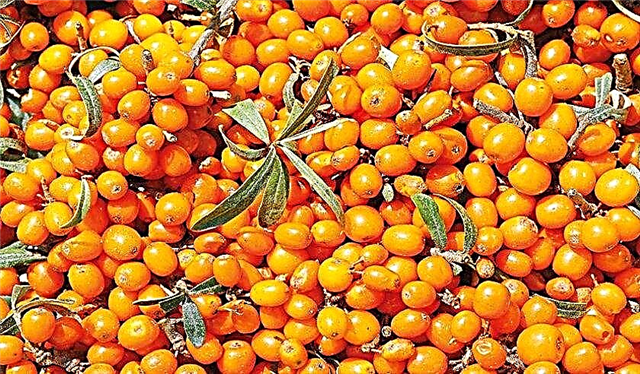
Pros and cons of the variety
The variety is not considered the absolute leader among the other varieties - it is rather a "strong middle peasant" in many respects, and it is not for nothing that it is considered exemplary.
- The positive characteristics include:
- good winter hardiness;
- weak spike of shoots;
- undemanding to the ground;
- large and tasty fruits;
- growth restraint;
- berries are used in many areas.
There are much fewer negative factors - this is a strong dependence of the quality and quantity of the crop on agricultural technology, as well as pollination. If you are looking for seedlings that do not need it, this variety will not work.
Sea buckthorn planting
The order of planting is not too different from that generally recognized for this type of plant. Planting is carried out exclusively as a group, because in order to get a crop, not only female but also male trees are needed. However, keep in mind that they grow quite high, but the annual growth is small.
When to plant
Most often, planting is done in early spring, when the movement of juice has not yet begun. In autumn, resorting to the procedure is possible only in the south, since in areas with a more severe climate, the plant risks not rooting before the onset of frost. Sea buckthorn with a closed root system is suitable for planting in any season except during the sultry summer.

In case of ignoring the recommended dates, young stems should be buried before spring. To do this, dig a ditch, the depth of which will be approximately 0.5 m, while setting the direction of the crown to the south. Sprinkle the roots with soil, and with the onset of frost cover seedlings, leaving only the upper part outside. Then they spread the spruce branches, and with the first snow, additional insulation is constructed from natural material.
Seat selection
It is necessary to plant a tree in an open area, where a lot of sunlight falls, and the distance with other plants is at least 3 m. In addition, nearby it is undesirable to have beds - when they are dug, there is a chance to damage the root system, since it lies shallow.
It is recommended to refuse to land next to fences or buildings, as well as areas where groundwater rises by more than 1 m.Did you know? Due to its juiciness and taste in Russia, sea buckthorn was called the “Siberian pineapple”.

Soil preparation
Landing holes are best prepared in advance. The soil dug in the process must be preserved to create a nutritious soil mixture, which is subsequently sprinkled with rhizome.
For cooking use:
- compost or manure - 1 bucket;
- washed river sand or pebbles - 1 bucket;
- land removed during the formation of the recess - 2 buckets;
- wood ash - 0.5 buckets;
- phosphoric fertilizer (superphosphate) - 0.2 kg.
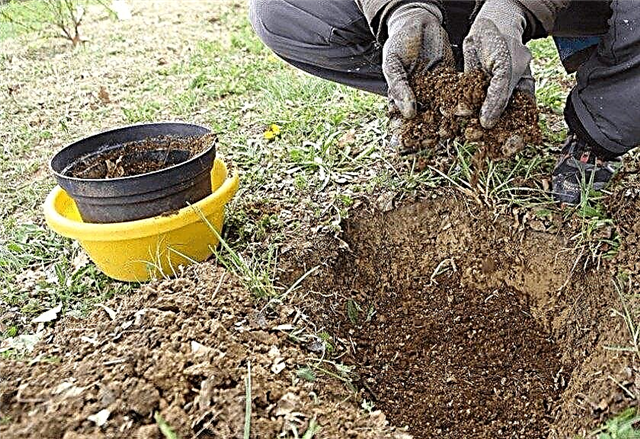 All components are thoroughly mixed to a homogeneous mass and used directly in the process of disembarkation.
All components are thoroughly mixed to a homogeneous mass and used directly in the process of disembarkation.
Selection and preparation of planting material
The best choice would be annual and biennial seedlings - by this age, their growth should be about 30-50 cm, and the length of the roots - at least 20 cm. It is important to pay attention to the bark - it should not exfoliate or have a dark brown color, as this indicates damage caused by frost. Before planting, seedlings are dipped in a clay mash, which is quite easy to prepare.
Essential Ingredients:Important! If the roots of the plant are dried, before the procedure, place the rhizome in a bucket of water for a day or two, so that they become elastic.
- water - 1 bucket;
- clay - 300-400 g;
- land - about 500 g;
- wood ash - 0.5 l.
 On the site, choose a suitable place where they dig a small depression. A bucket of water is poured there, gradually mixing with excavated soil and clay, so that the consistency resembles sour cream. Next, add ash at the tip of the shovel, mix everything. The mixture is ready, sea buckthorn bushes can be immersed in it.
On the site, choose a suitable place where they dig a small depression. A bucket of water is poured there, gradually mixing with excavated soil and clay, so that the consistency resembles sour cream. Next, add ash at the tip of the shovel, mix everything. The mixture is ready, sea buckthorn bushes can be immersed in it.
Algorithm and landing scheme
Sea buckthorn can be planted both in rows and in random order. For pollination to be of high quality, it is worth observing the proportion of male and female trees - 1 to 5, but not more. Most growers, on the contrary, reduce the ratio, as male species die more often. Therefore, they are recommended to be planted on the windward side of a group or surrounded by female specimens. The best pollinator would be a male bush of an identical variety.
The distance between the holes for planting should be at least 2 m, in the bottom of each, with a slight shift from the center, establish a rod to which the seedling will subsequently be tied. They deepen it, carefully straighten the roots and fill it with a nutritious mixture, carefully tamping so that there are no voids. It should be noted that, as a result, the root neck should be 6-8 cm above ground level. After all the manipulations produce abundant watering and mulching with hay or sawdust.

Further care
Nursing procedures consist of a number of simple actions by the gardener - for example, compared to other fruit trees, they do not dig up the trunk circle of sea buckthorn. The basic rules are worth knowing and applying in practice, and then the harvest will be generous, and the berries will be large and juicy.
Fertilizers and fertilizers
Supplementary nutrition is introduced quite rarely, only once every 3-4.5 years. The best choice for this will be organic fertilizers, such as rotted manure or humus in combination with any phosphorus fertilizer.
 When winter has come to an end and the snow has thawed, it is recommended to add nitrophosphate by scattering in the root zone. However, one should not be zealous with mineral dressing, because the roots of the bush have nodules of nitrogen-fixing bacteria, which also supply the rhizome with the necessary component.
When winter has come to an end and the snow has thawed, it is recommended to add nitrophosphate by scattering in the root zone. However, one should not be zealous with mineral dressing, because the roots of the bush have nodules of nitrogen-fixing bacteria, which also supply the rhizome with the necessary component.
Watering
This procedure should be taken very seriously if you want to grow a healthy Chuiskaya sea buckthorn. It is especially important to water in the summer when the weather is hot and dry. Humidification is carried out regularly and carefully due to the fact that the roots of the plant are highly branched.
Intensive cultivation technology involves a minimum of 4 irrigation: during flowering, fruit pouring, ripening and autumn, it is also called “moisture-charging”. However, the number of times may vary due to weather conditions.
Cropping and shaping
The first three years of cultivation, the bush is formed by pruning, and after this time they only maintain certain contours. The crown is formed in this way: immediately after planting, the height of the seedling is shortened by 15–20 cm, and the next year, 2–4 strong shoots are selected from the entire shoot, and they are slightly cut. The remaining branches are removed completely.
 In addition, they resort to sanitary pruning in spring and autumn to remove all dry, damaged, old and diseased parts of the plant.
In addition, they resort to sanitary pruning in spring and autumn to remove all dry, damaged, old and diseased parts of the plant.
Winter preparations
The shrub is classified as frost-resistant, so that the need for special preparatory manipulations by itself disappears. However, there is a chance of damage by rodents. To minimize the risk, you can protect the sea buckthorn with a metal mesh, as well as whitewash the stem and skeletal branches with lime.
Cover the near-trunk circle with fir branches, and on top of this apply a layer of turf - excellent protection against freezing of the rhizome. However, the procedures are advisory in nature, their implementation is determined by your desire and capabilities.Important! From the fruits of the plant you can get extremely valuable oil. However, its content in the described variety is much less than in technical varieties.

Pests and diseases
Chui sea buckthorn is the owner of strong immunity to all kinds of diseases, but it also happens that infection occurs. Most often the reason for this is unsuitable growing conditions - high humidity, neglect of the rules of care, etc.
The main diseases include:
- Septoria. It manifests itself in the formation of dark spots on the leaves with a distinctive faded middle. You can save the infected specimen if you tear off and burn the leaves in time, and spray in the early spring with a solution of copper sulfate (1%).
- Nectriosis - mushrooms with bright red or orange thickening appear on the bark of the tree. In such a situation, all affected shoots are cut and burned.
- Verticillosis (wilt). Foliage and branches quickly dry and turn yellow, after which they die. You can’t save a tree - dig it out and burn it.
- Moniliosis is characterized by lethargy and softness of berries, which eventually mummify. The collection and destruction of all dried fruits will help save sea buckthorn, and in the fall and spring, the bush is treated with a solution of copper sulfate (1%) to eliminate it and for preventive purposes.
- Blackleg. Discovered by rot of the trunk closer to ground level. When it rots completely, the plant falls. This is characteristic of young seedlings. It is advisable to transplant them into a sandy soil substrate (in a ratio of 1: 1), as well as pour a light pink solution of potassium permanganate.
- Brown spotting. It is expressed in the appearance of brown spots on the leaves, after which the plants die. For the disease, the same treatment is used as for septoria.
- Black cancer. Dark spots can be seen on the bark, then cracks appear in this place, and the wood acquires a dark shade. The best treatment would be to quickly remove the foci of infection, cover the sections with clay and mullein, and treat with copper sulfate.

Insects extremely rarely attack the Chuisky variety, and there are quite a few of them: spider mites, sea buckthorn flies, aphids and moths. In the fight against parasites, spraying is used with "Fufanon", "Inta-Vir", etc.
Sea buckthorn Chuiskaya has established itself as a variety that is not difficult to grow, and also suitable for any climate. Following all the recommendations and rules, even a novice gardener will manage to grow this tree in his country house.

